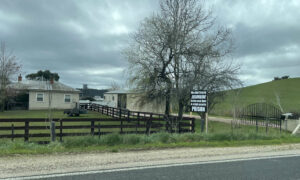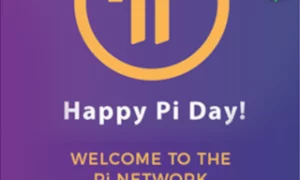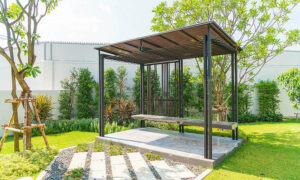Media release – National Shelter / SGS Economics and Planning, 14 November 2023
Rental affordability hitting all time lows across the nation: new report
Rental affordability has plunged in the past year to reach decade lows in several areas across the country, according to the ninth annual National Shelter-SGS Economics and Planning Rental Affordability Index.
Affordability has worsened in every city except Hobart and Canberra and has deteriorated rapidly in Sydney (by 13 per cent), Melbourne and Perth (both by 10 per cent). Only Melbourne and the ACT have what are considered acceptable rents for average income households.
Affordability in the regions has also declined everywhere except Tasmania with falls of between seven and nine per cent in regional QLD, regional SA, and regional WA.
National Shelter CEO Emma Greenhalgh said: “Rental affordability in Australia is going from bad to worse.
“In the past year renters have been smashed with enormous rent hikes well beyond income growth.
“With vacancy rates so incredibly low, landlords have been able to pass on interest rate rises to tenants – and the pressure is only set to increase following last week’s rate rise.
“More households in our cities and our regions are in rental stress and many areas are the most unaffordable they have ever been.
“Governments must urgently address this worsening affordability crisis, including by building more homes and better regulating renting.”
The situation is particularly dire for people on low incomes, with a single person on JobSeeker having to spend more than 75 per cent of their income to rent a one bedroom apartment in any capital city.
Even the regions are severely unaffordable with rents in regional SA – comparatively the most affordable area – still requiring 53 per cent of a JobSeeker’s income.
A single pensioner would need to spend 50 per cent of their income to rent in all capitals except Adelaide and Hobart and at least 32 per cent in regional areas.
Greater Brisbane, regional QLD, regional VIC and regional NSW posted their lowest affordability levels since 2012, with average households needing to spend between 27 and 30 per cent of their income for a median property in those areas.
Greater Sydney is now level with Greater Hobart as the least affordable capital city with a median rental at $650 a week costing 29 per cent of the average renting household’s income.
Greater Brisbane ranks third among the cities with its lowest ever affordability rating and median rentals at $553 a week costing 28 per cent of average income.
Regional QLD is now the least affordable place of all regions and capital cities with median rentals at $553 costing 30 per cent of average income, a figure which meets the threshold for rental stress.
“Unaffordability has spread from the cities to well into the regions. Households will have to live further away from where the jobs are to access affordable rents, and businesses are struggling to find workers,” said Ellen Witte, Principal at SGS Economics & Planning.
“This downward spiral has now reached the point where very few affordable long-term rentals are on offer.
“We need to attack this problem from multiple angles. This means rapidly expanding social and affordable housing, rethinking how we use tax subsidies and strengthening renters’ rights.”
The Index was developed in partnership with the Beyond Bank Australia Foundation. Peter Rutter, Chief Community & Strategy Officer, said: “We believe that everybody has the right to safe, secure and affordable housing, which includes rental accommodation.
“Through the Beyond Bank Australia Foundation, we invest in projects and initiatives that aim to make this a reality. We are proud to again partner in this important work so that we can continue to understand the cost of living pressures that people are facing and think about how we can work together to overcome them.”
Tasmanian rental crisis deepens
Hobart renters are exposed to the toughest conditions in the country, with the broader Tasmanian market not far behind, according to a landmark annual study that cross references incomes against rents and shows Tasmanians earning low incomes are bearing the brunt of the crisis.
Shelter Tas, Tasmania’s peak body for housing and homelessness is concerned by worsening conditions for Tasmanian renters. The annual National Shelter-SGS Economics and Planning Rental Affordability Index shows since 2016, the median rental rate in Hobart has grown by 60 per cent. This is currently only four per cent lower than the Melbourne median, despite Hobart’s average rental household income being 21 per cent lower.
For people on low incomes such as single people on Jobseeker, single or coupled pensioners, and single part time worker parents on benefits, rents were classed as severely unaffordable.
For people on average incomes, almost all parts of Greater Hobart are considered moderately unaffordable or unaffordable, with affordability decreasing significantly from Mount Nelson to Glenorchy over the past two years.
The report shows an alarming and historic low in affordability for the rest of Tasmania. The average rental household is paying around 28 per cent of their income for a dwelling at the median rate, near the definition of rental stress. Regional centres such as Launceston offer moderately unaffordable to unaffordable rents. From Swansea to Orford, rents have deteriorated from acceptable to moderately unaffordable in the last year.
To find acceptable to affordable rents, households on the average income need to look to the north-west of the state, though towns such as Burnie and Devonport have moderately unaffordable levels of rent.
For people on low incomes in the rest of Tasmania (such as single people on Jobseeker, single or couple pensioners, and single part time worker parents on benefits) rents were classed as either severely unaffordable or unaffordable.
“The Rental Affordability Index is shocking but not surprising,” Shelter Tas CEO, Pattie Chugg said. “Hobart rents are almost equal to rents in Melbourne, even though wages here are significantly lower. This is an unacceptable level of pressure, and it is pushing people right to the brink of homelessness.
“Housing hardship and cost of living pressures are creating a social crisis that is pushing further up the income scale. Even with an average income of $86, 000 a household renting at the median rent is dangerously close to rental stress, paying 29% of their income in rent. But people on low incomes such as pensioners, those on income support or part time workers, have it the worst, living in dire housing stress and too often are facing the threat of homelessness. Regional communities that used to offer some respite now have surging, inescapable rents.
“Housing and homelessness services are overwhelmed with requests for help and often can’t keep up with demand.
“Tasmania’s population is growing and we need a clear commitment to make ten per cent of all housing stock social or affordable. Unless that happens, more Tasmanians will be at risk of housing stress and homelessness.”
Kishan Ratnam, Partner at SGS Economics & Planning said there was a strong economic dimension to the crisis. “The affordability crisis is also hurting the economy, and with major infrastructure projects underway and in the pipeline, there are very few affordable rentals for workers. In addition, seasonal workers are struggling to find a place to rent.
“This downward spiral has now reached the point where very few affordable long-term rentals are on offer.” We need to attack this problem from multiple angles. This means expanding social and affordable housing, rethinking how we use tax subsidies and strengthening renters’ rights.”




























